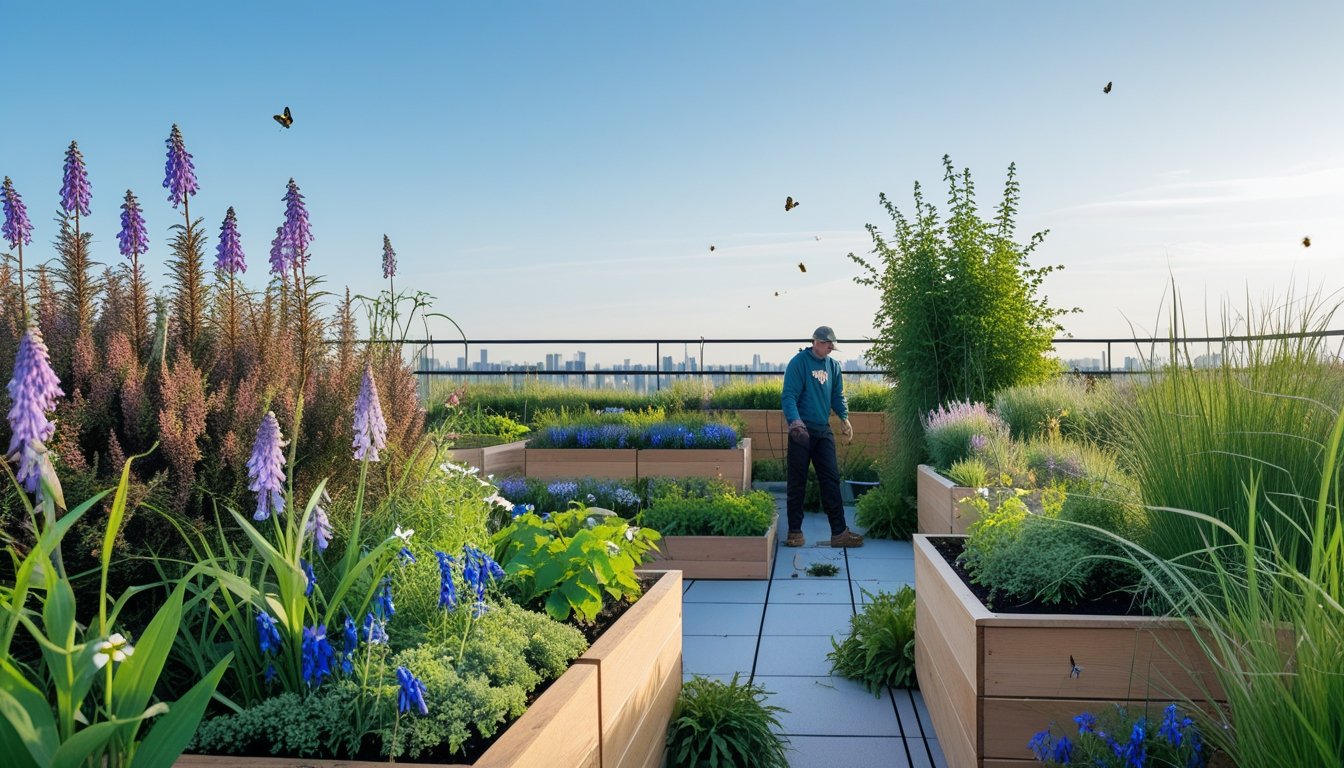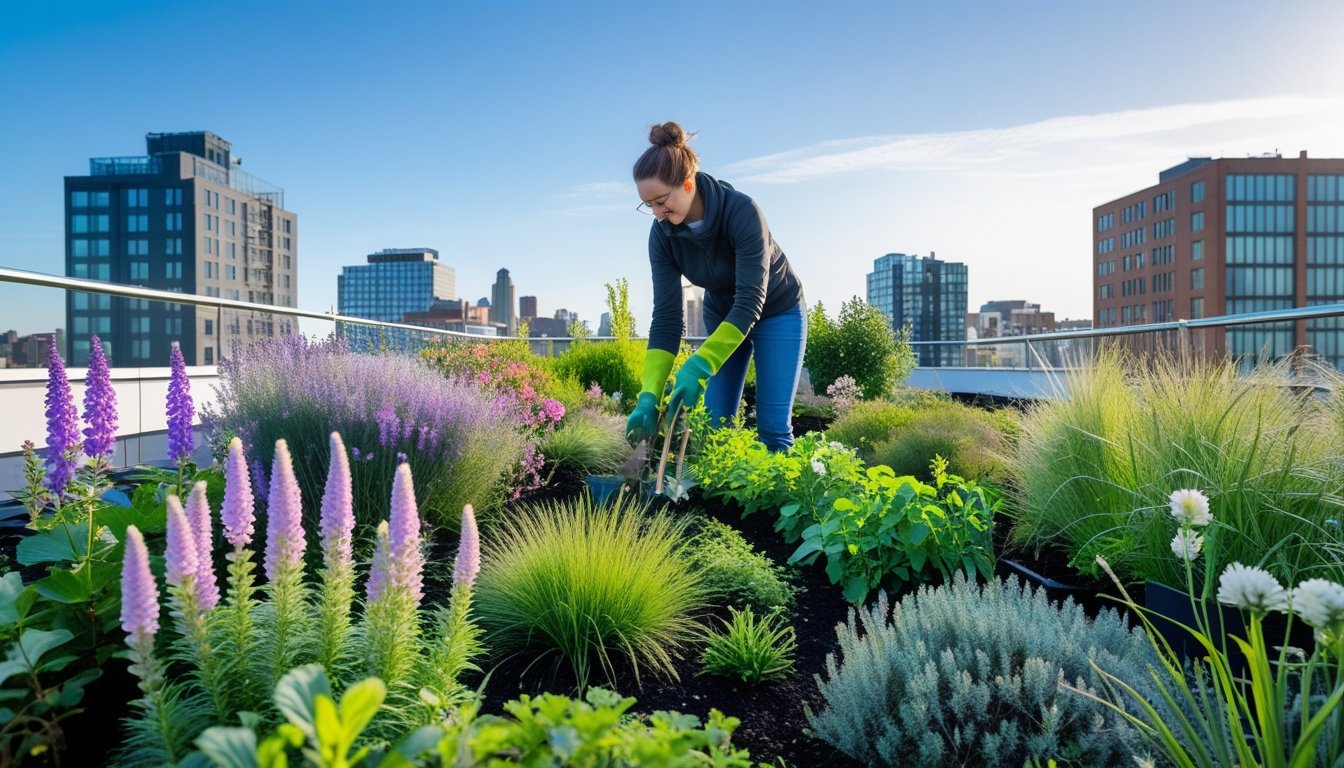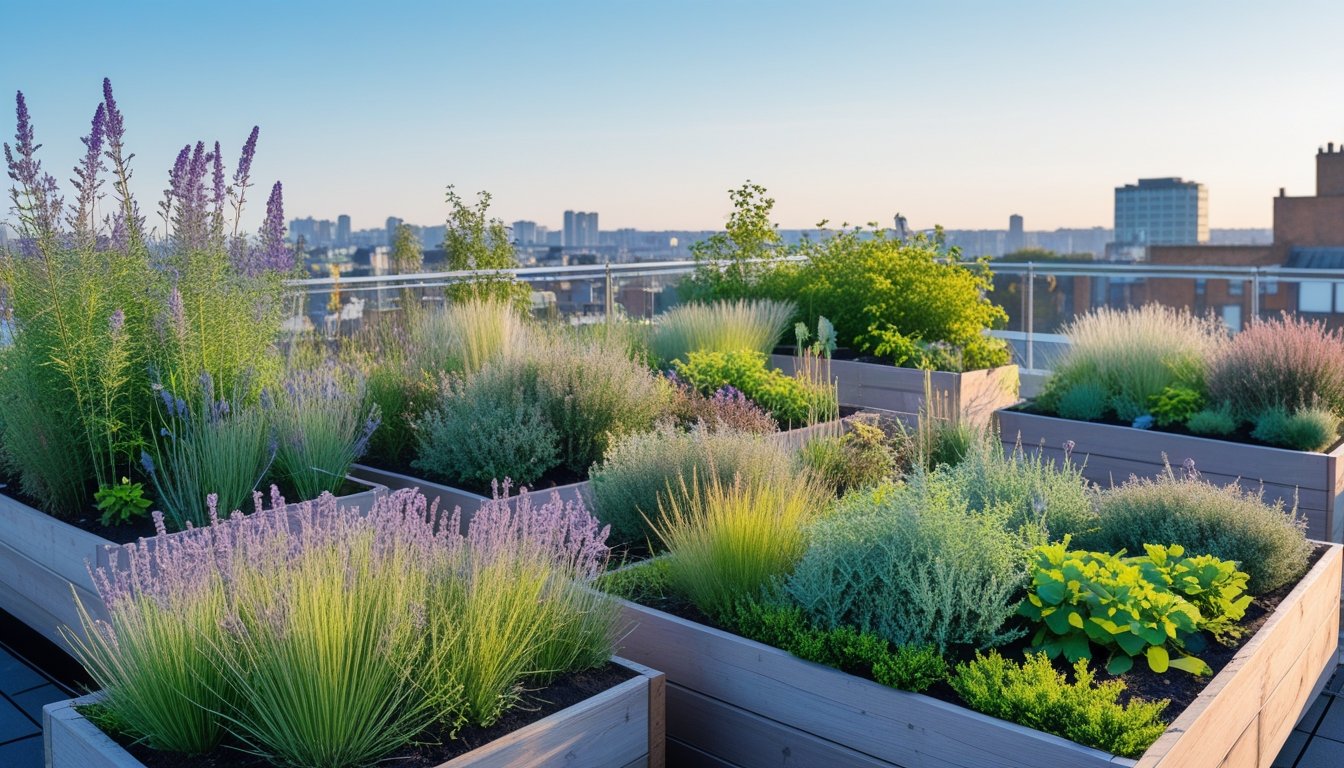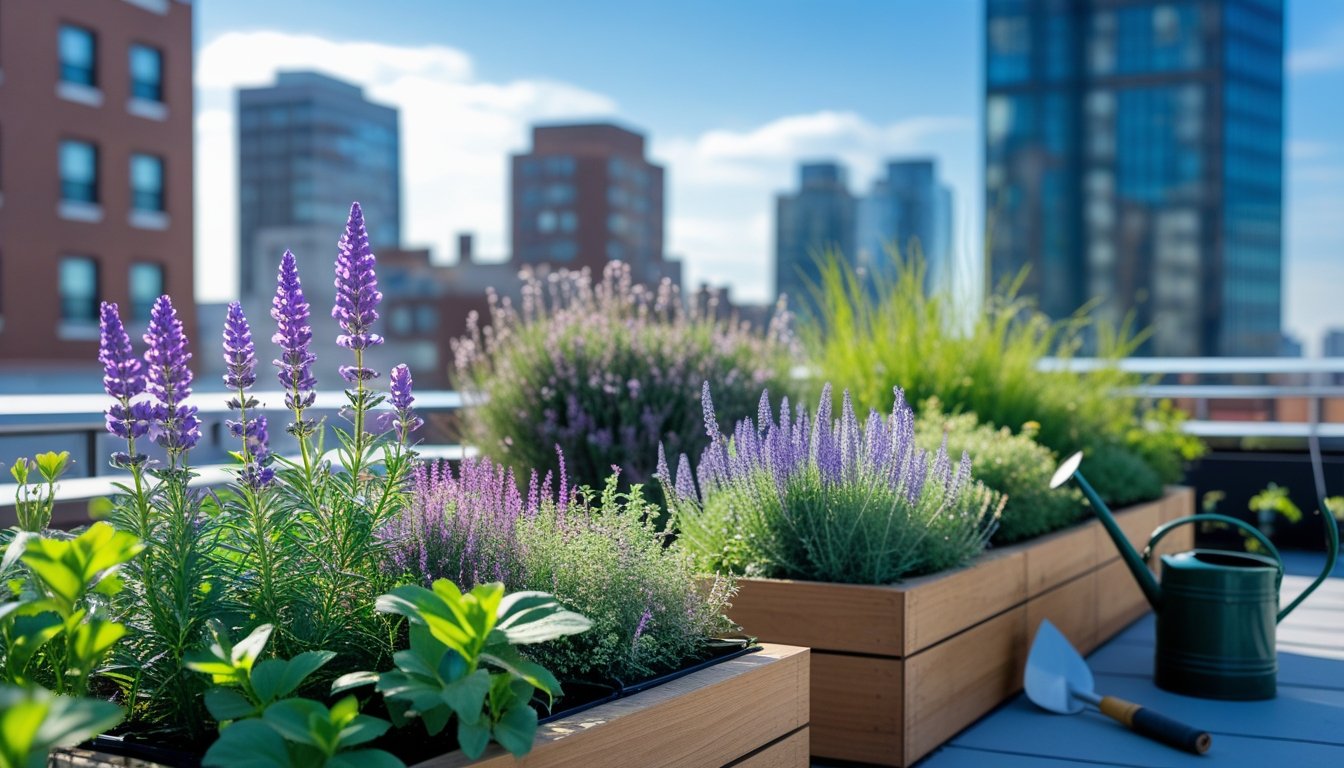Late updated: 26 Aug 2025 11:08
Written by: Emily Thornton
Exploring Native UK Plants for Urban Rooftop Gardens: Sustainable Choices for City Spaces
Urban rooftop gardens in the UK are becoming a vibrant testament to sustainable living, offering a lush escape amidst the concrete. They not only enhance aesthetics but also contribute positively to urban biodiversity. As we explore the potential of native UK plants for these spaces, we delve into the selection of species that are adaptable, require less maintenance, and support local ecosystems.

Choosing native plants like mint, thyme, and lavender can significantly improve the resilience and sustainability of rooftop gardens. These species thrive in varying weather conditions, characteristic of the UK climate, making them an ideal choice for urban environments. Additionally, native plants can provide essential habitats for insects and birds, fostering a balanced ecosystem right above the bustling city streets.
Our journey into the world of native plant selection is essential not only for their beauty but for their contribution to the larger environmental fabric. Urban residents can find joy in creating green spaces that are both practical and beneficial. This overview sets the stage for deeper understanding and practical advice on nurturing a thriving rooftop garden that aligns with nature's blueprint.
Key Takeaways
- Native UK plants are ideal for sustainable rooftop gardens.
- Mint, thyme, and lavender are resilient choices for urban spaces.
- Rooftop gardens support local biodiversity and urban ecosystems.
Selecting Native UK Plants for Urban Rooftop Gardens

In urban rooftop gardens, choosing native UK plants offers several benefits. These plants adapt well to local conditions, support biodiversity, and require less maintenance. We must consider factors such as climate tolerance, diversity, and aesthetics when selecting plants for rooftop settings.
Benefits of Native Plants in Urban Rooftop Settings
Native plants are well-suited for urban rooftop gardens as they are adapted to the local climate and soil conditions. This adaptability often results in reduced maintenance needs. Using native plants can enhance biodiversity, providing habitat and food sources for local wildlife, such as birds and pollinators. Their presence encourages a healthier ecosystem and can contribute to the overall resilience of an urban environment.
Key Considerations for Urban Rooftop Plant Selection
When selecting plants for an urban roof garden, we must consider factors such as light exposure, wind exposure, and the weight load of the plants and containers. Native species that are accustomed to the UK's specific conditions are often more viable in these settings. Site-specific conditions such as building height and roof accessibility should also influence plant selection to ensure the garden's long-term success.
Drought-Tolerant and Hardy Species for Rooftop Conditions
In a rooftop environment, plants must withstand varying conditions, including intense sunlight, high winds, and limited water. Native UK plants like sedums, thyme, and certain types of grasses are excellent choices as they are hardy and drought-resistant. Such species require less watering, making them ideal for rooftops with limited irrigation options, and help maintain a sustainable gardening practice.
Maximising Year-Round Visual Appeal and Biodiversity
To keep a rooftop garden appealing throughout the year, we can select a mix of perennial plants that offer seasonal interest and support biodiversity. Plants such as lavender, which blooms in summer, provide not only aesthetic value but also attract pollinators. By combining flowering species with deciduous shrubs, we can ensure that urban roof gardens remain vibrant and engaging across different seasons.
Top Plants and Planting Strategies for UK Rooftop Gardens

In UK urban rooftop gardens, selecting the right native plants is crucial. Effective planting strategies involve using varieties that thrive in local climates, providing resilience and low maintenance.
Wildflowers and Ornamentals: Poppies, Cornflowers, and Native Grasses
When considering wildflowers and ornamental plants, poppies and cornflowers are excellent choices. These vibrant flowers not only add colour but are also well-suited to the UK climate. They thrive in sunny, well-drained conditions, making them ideal for rooftop settings. Native grasses such as Deschampsia cespitosa add texture and movement, creating a dynamic visual appeal. Grouping these plants can mimic a natural meadow, attracting pollinators and contributing to local biodiversity. The ability of these plants to withstand winds on rooftops enhances their appeal as functional ornamental selections.
Herbs and Groundcovers: Thyme, Chives, and Oregano
Herbs like thyme, chives, and oregano serve dual purposes in rooftop gardens. Not only do they provide culinary value, but they also act as effective ground covers. These plants thrive in pots or directly planted in garden beds, enjoying the sun and well-drained soil typical of rooftop gardens. Their compact size and drought tolerance make them perfect for minimal maintenance. Placing these herbs near walkways or seating areas enhances their accessibility and allows gardeners to easily harvest fresh herbs. The aromatic foliage adds sensory appeal, while their resilience makes them a sustainable option for urban gardening.
Foliage Favourites: Hostas and Shade-Tolerant Selections
In areas where shade is prevalent, foliage plants like hostas are invaluable. Known for their broad leaves and diverse colours, hostas add an attractive aesthetic to shaded rooftop corners. They require less sunlight, thriving in cooler, less exposed locations. To complement hostas, consider incorporating other shade-tolerant plants like ferns and heucheras. These selections create lush greenery and provide contrast against the brighter blooms of sun-loving plants. Strategic placement can increase biodiversity, providing habitat and sustenance for various urban wildlife. With attention to shade-tolerance and placement, we can create a balanced, thriving ecosystem on our rooftops.
Frequently Asked Questions

Incorporating native UK plants into rooftop gardens can enhance biodiversity, withstand urban challenges, and support sustainable practices. Key considerations involve plant selection, watering frequency, pollution tolerance, legalities, ecosystem creation, and soil suitability.
What are the best native plants for attracting wildlife to an urban rooftop garden in the UK?
To attract wildlife, we should consider species like Bluebells, Foxgloves, and the English Oak. These plants provide food and shelter to various insects and birds, contributing to a thriving ecosystem.
How often should one water native UK plants in a rooftop garden to ensure their health?
Watering frequency depends on the specific plant species and environmental conditions. Generally, established native plants require less frequent watering. During dry spells, regular assessment of soil moisture can ensure our plants remain healthy without overwatering.
Which native UK plants are most resilient to urban pollution and environmental stressors?
Plants like Silver Birch and Hawthorn are excellent choices for urban environments. These species have adapted to withstand pollution and other urban stressors, ensuring they maintain their vitality even in challenging conditions.
What are the legal considerations when cultivating a rooftop garden with native UK flora?
Before establishing a rooftop garden, we should consult local regulations, such as building codes and safety standards. It's important to ensure the structural integrity of the rooftop and obtain any necessary permissions to cultivate native flora.
How can one create a sustainable ecosystem with native UK plants on an urban rooftop?
By choosing a diverse range of native plant species, we can foster interdependent relationships that support a balanced ecosystem. Incorporating features like rainwater harvesting and composting can further enhance sustainability.
What soil types are most conducive for growing native UK plants in rooftop gardens?
Understanding soil type is crucial for plant health. We should aim for a balanced mix that matches the natural requirements of our chosen native plants. Using lightweight substrates may also alleviate structural concerns while ensuring proper drainage and nutrient provision.
